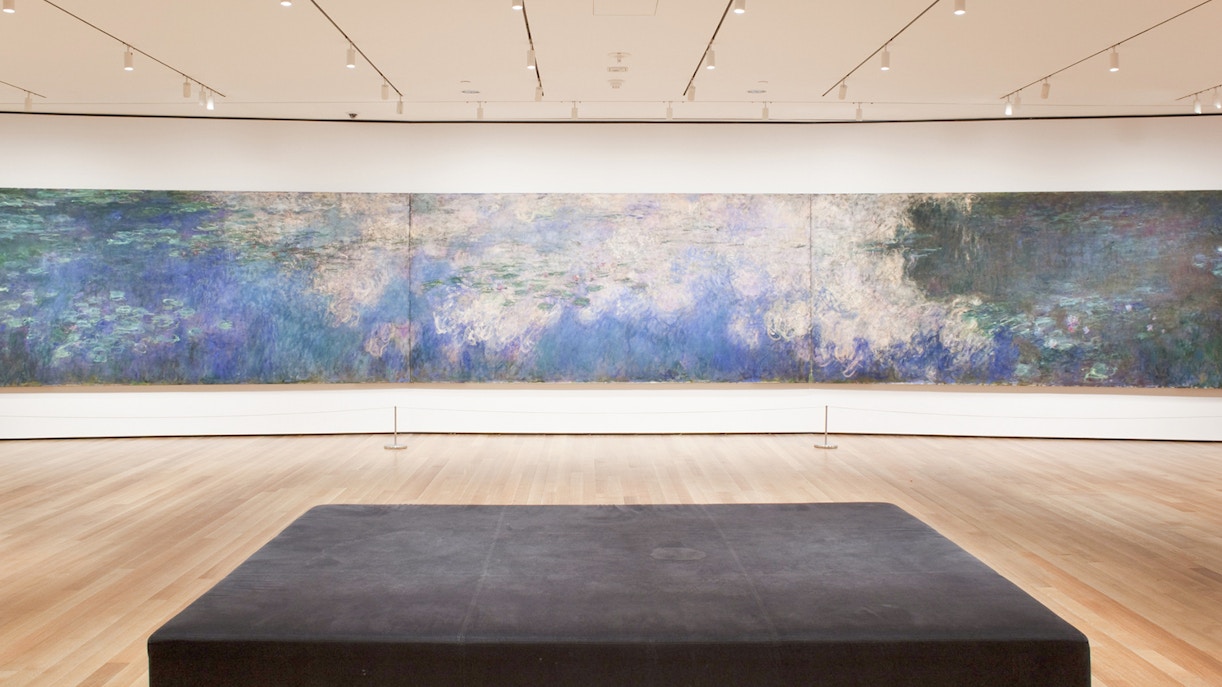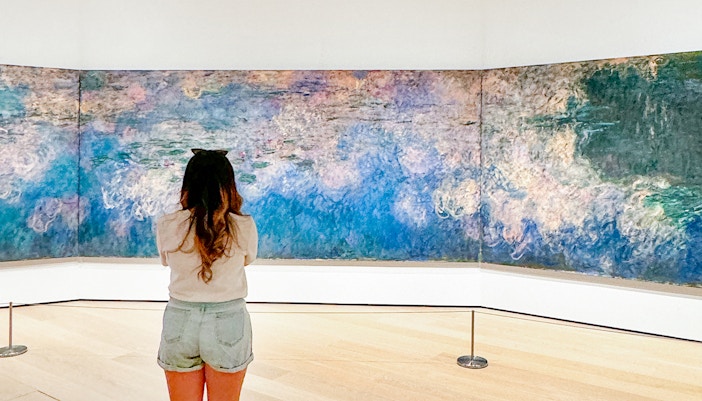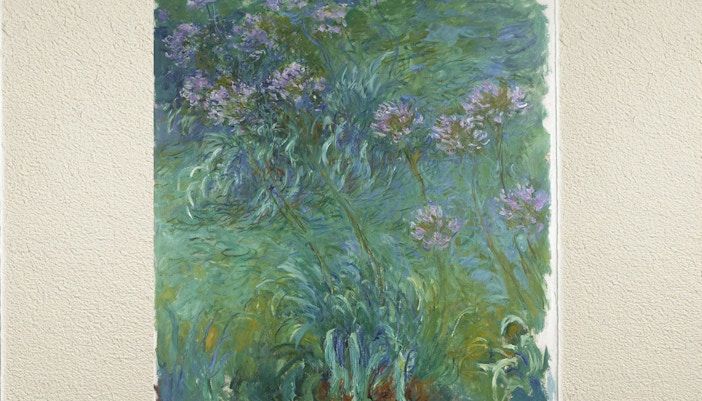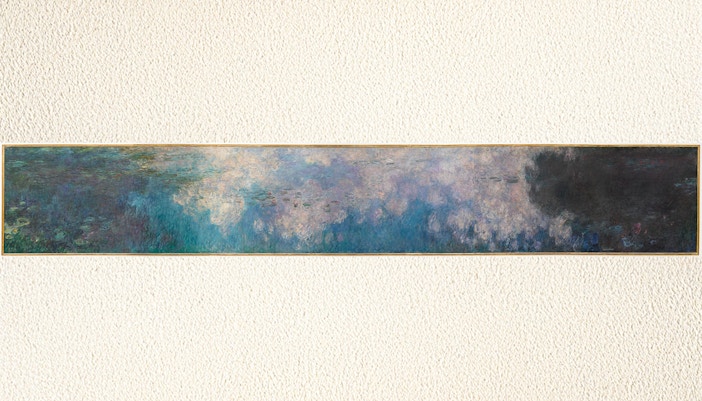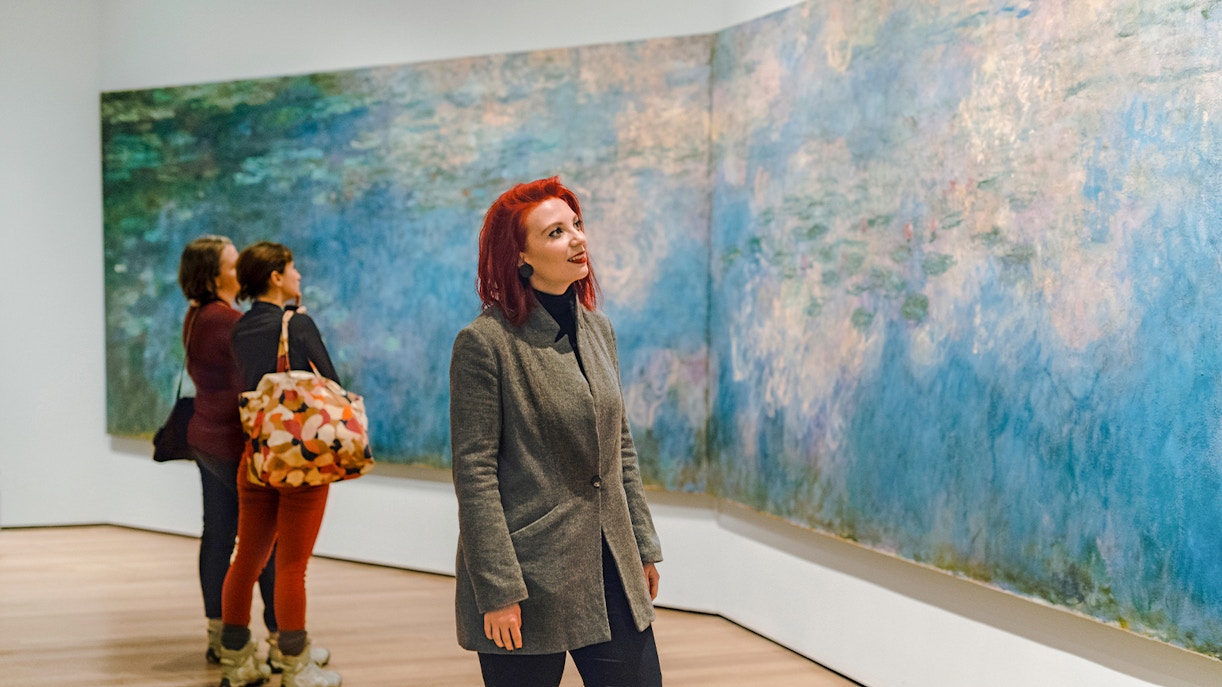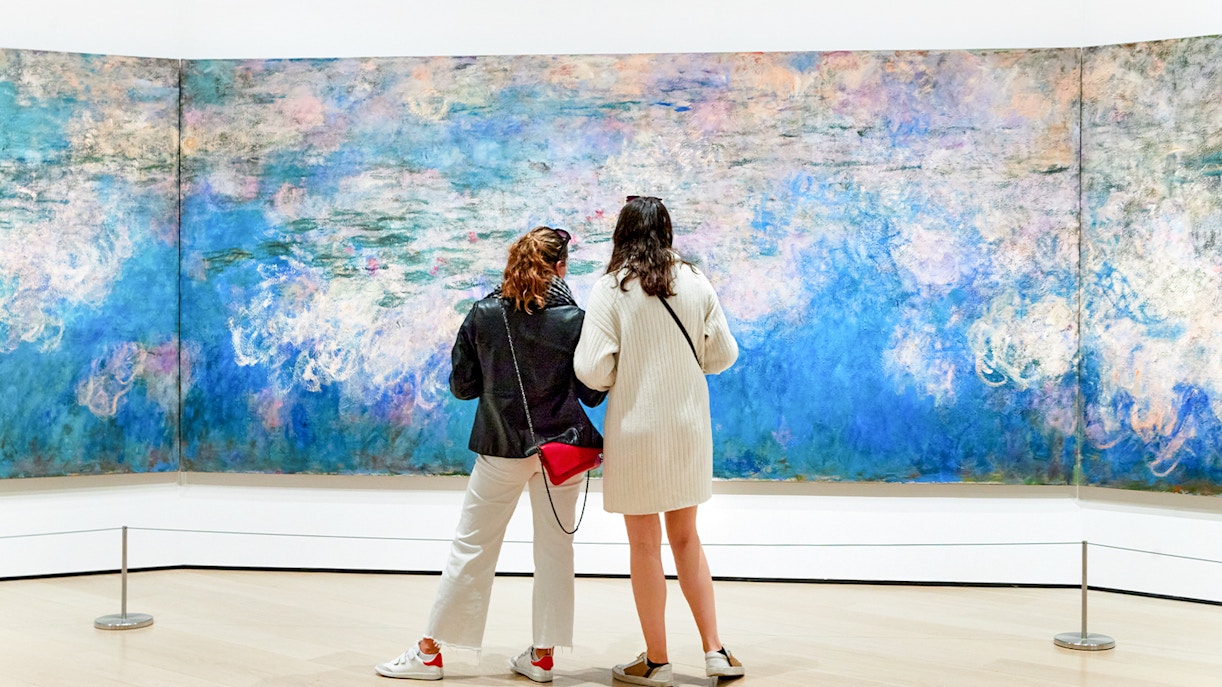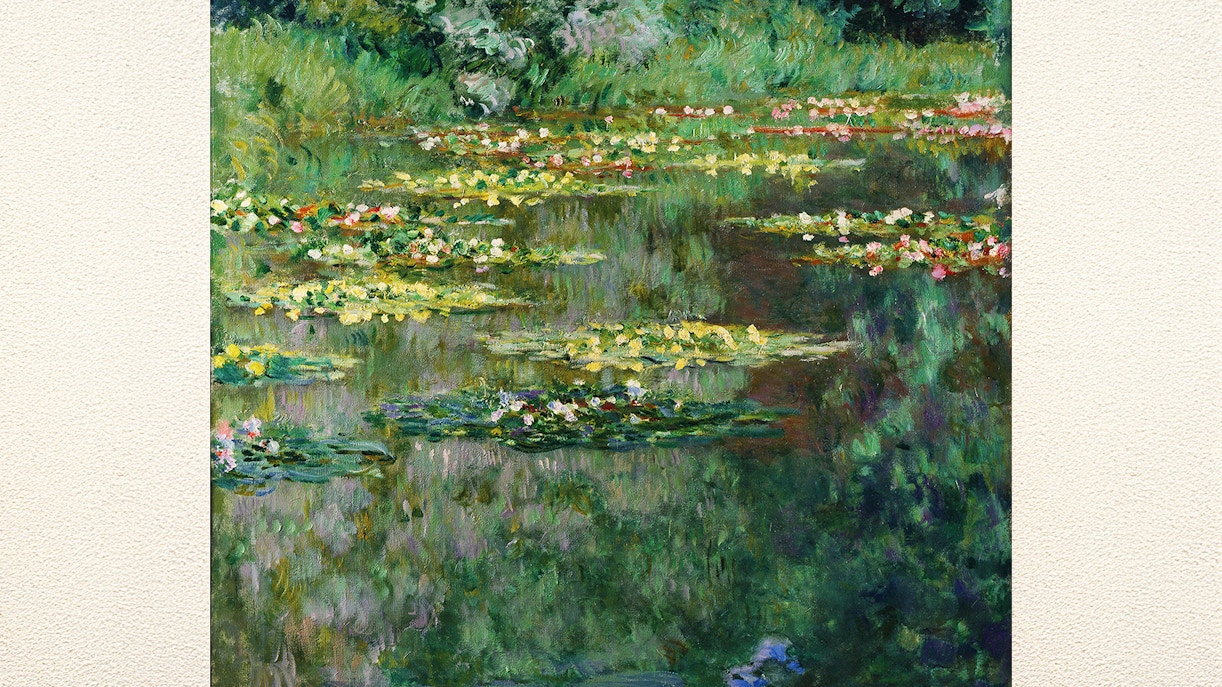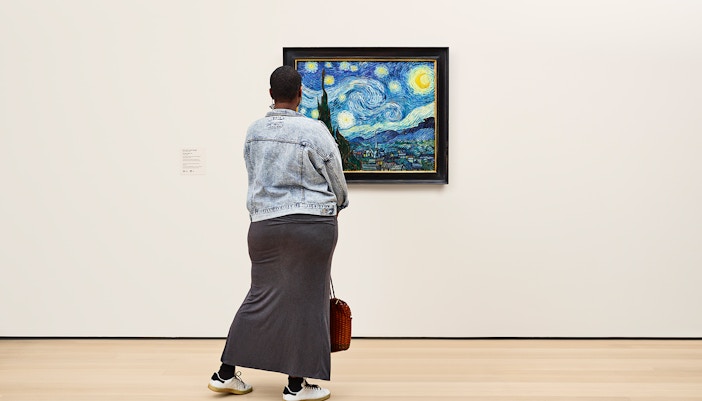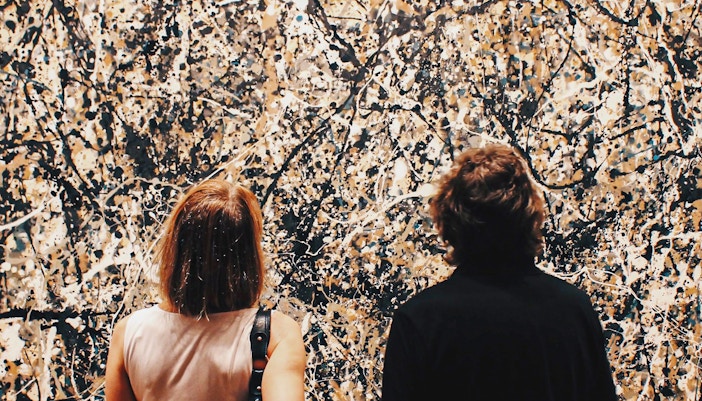The Water Lilies or Nymphéas series by Claude Monet has approximately 250 oil paintings in the collection, depicting the water lily pond and its surrounding garden at his home in Giverny.
Period: Late 1890s to 1926
Medium: Oil
Art style: Impressionist
Size range: 46 x 56 cm to 200 x 1700 cm, with some circular paintings, and some paintings unknown in size and seen only in photographs.
Display locations: Museum of Modern Art in New York, Musée Marmottan Monet, the Musée d'Orsay in Paris, the Tate, the Metropolitan Museum of Art, the Art Institute of Chicago, the Saint Louis Art Museum, the Nelson-Atkins Museum of Art in Kansas City, Missouri, the Carnegie Museum of Art, Princeton University Art Museum, the National Museum of Wales, the Musée des Beaux-Arts de Nantes, The Toledo Museum of Art, the Cleveland Museum of Art, the Portland Art Museum, and the Legion of Honor.

